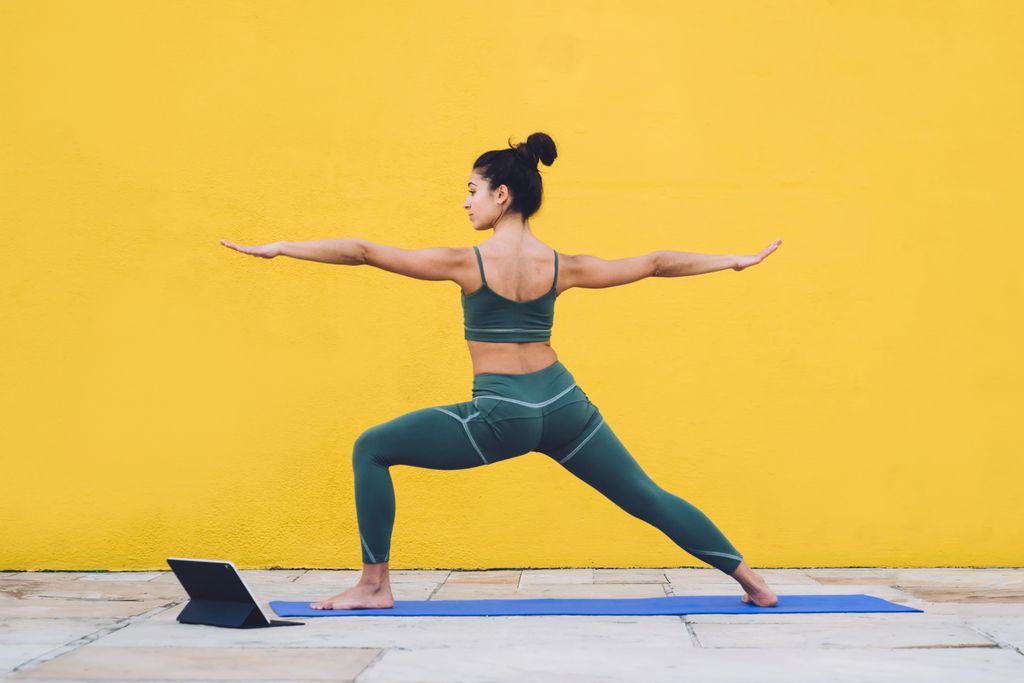Yoga for Professionals: Relaxation Techniques to Boost Productivity
In today’s fast-paced work environment, professionals often find themselves overwhelmed by tight schedules, looming deadlines, and demanding responsibilities. Balancing work and personal life becomes increasingly challenging, leading to stress and decreased productivity. Fortunately, yoga provides a holistic solution to these issues. Through its blend of physical postures, breathing exercises, and mindfulness practices, yoga can help professionals relax, recharge, and enhance their efficiency. This comprehensive guide will explore how yoga can benefit professionals and provide detailed techniques to seamlessly integrate it into your daily routine.
The Importance of Yoga for Professionals

Yoga is more than just a form of exercise; it’s a lifestyle that promotes mental clarity, emotional balance, and physical health. For professionals, adopting yoga can bring about transformative benefits:
- Stress Management: High-stress levels negatively impact productivity and overall health. Yoga helps reduce cortisol levels, promoting relaxation and calmness.
- Enhanced Focus: Practicing mindfulness through yoga improves concentration, enabling you to complete tasks more efficiently.
- Increased Energy Levels: Gentle movements and controlled breathing energize your body, helping combat fatigue.
- Improved Posture: Long hours at a desk can cause back pain and poor posture. Yoga strengthens the core and aligns the spine.
- Boosted Emotional Resilience: Mindfulness techniques in yoga help you respond to challenges with greater composure.
Supporting Data on Yoga’s Benefits
Numerous studies validate the positive effects of yoga on productivity and mental health. Research published in the “Journal of Occupational Health Psychology” reveals that employees practicing yoga experience reduced stress and improved performance. Additionally, incorporating yoga into the workplace has been linked to lower absenteeism and higher job satisfaction.
Top Relaxation Techniques for Professionals

To help professionals incorporate yoga into their lives, here are practical techniques tailored for busy schedules:
1. Breathing Exercises (Pranayama)
Pranayama, the practice of breath control, is a cornerstone of yoga. It’s simple, effective, and can be done anywhere—even at your desk. Breathing exercises calm the nervous system, improve oxygen flow to the brain, and enhance mental clarity.
Techniques to Try:
- Alternate Nostril Breathing (Nadi Shodhana): This technique balances energy levels and reduces stress. To practice:
- Sit comfortably.
- Close your right nostril with your thumb and inhale deeply through your left nostril.
- Close your left nostril with your ring finger and exhale through the right nostril.
- Repeat for 5 minutes.
- Box Breathing: Commonly used by professionals and athletes, this method boosts focus:
- Inhale for 4 counts.
- Hold your breath for 4 counts.
- Exhale for 4 counts.
- Hold for 4 counts and repeat.
2. Desk Yoga Poses
Even without a yoga mat, you can perform these simple poses to release tension and stretch your body:
- Seated Cat-Cow Stretch:
- Sit on your chair with your feet flat on the ground.
- Inhale, arch your back, and look up.
- Exhale, round your spine, and tuck your chin.
- Repeat for 1-2 minutes.
- Shoulder Rolls:
- Roll your shoulders forward, up, back, and down in a circular motion.
- Reverse the direction and repeat 10 times.
- Chair Pigeon Pose:
- Sit tall and cross your right ankle over your left knee.
- Gently press down on your right knee to stretch your hip.
- Hold for 30 seconds and switch sides.
3. Meditation for Professionals
Meditation fosters mental clarity and emotional stability. It’s an excellent tool for managing workplace stress and maintaining focus.
Steps for Quick Meditation:
- Find a quiet spot or use noise-canceling headphones.
- Sit comfortably with your spine straight.
- Close your eyes and focus on your breath.
- When your mind wanders, gently bring your attention back to your breath.
- Practice for 5-10 minutes daily.
Popular apps like Headspace, Calm, or Insight Timer offer guided meditations specifically designed for busy professionals.
4. Yoga Poses for Relaxation and Energy
These beginner-friendly poses can be done at home or during breaks:
- Child’s Pose (Balasana):
- Kneel on the floor and sit back on your heels.
- Stretch your arms forward and rest your forehead on the ground.
- Hold for 1-2 minutes.
- Downward-Facing Dog (Adho Mukha Svanasana):
- Start in a tabletop position.
- Lift your hips towards the ceiling, creating an inverted V-shape.
- Keep your heels pressed towards the floor.
- Hold for 1 minute.
- Mountain Pose (Tadasana):
- Stand tall with your feet together and arms at your sides.
- Engage your core and focus on your posture.
- Hold for 30 seconds to 1 minute.
- Legs-Up-The-Wall Pose (Viparita Karani):
- Lie on your back and place your legs against a wall.
- Relax your arms by your sides and breathe deeply.
- Stay in this position for 5-10 minutes to relieve fatigue.
5. Yoga Nidra: Yogic Sleep
Yoga Nidra is a powerful relaxation technique that combines guided meditation and body awareness. It’s ideal for professionals who need a quick reset.
Steps to Practice Yoga Nidra:
- Lie down in a comfortable position.
- Close your eyes and focus on your breath.
- Follow a guided meditation, often available online or via apps.
- Allow yourself to enter a state of deep relaxation without falling asleep.
A 20-minute Yoga Nidra session can leave you feeling refreshed and recharged.
Creating a Yoga Routine for Professionals

Consistency is key to experiencing the benefits of yoga. Here’s how to build a sustainable practice:
Morning Routine:
- Begin your day with 10 minutes of gentle stretches and sun salutations.
- Incorporate a few minutes of mindfulness meditation to set a positive tone.
Midday Break:
- Use your lunch break to practice desk yoga poses or a short breathing exercise.
- Take a brief walk while focusing on your breath to enhance mindfulness.
Evening Wind-Down:
- Dedicate 15-20 minutes to restorative poses like Child’s Pose or Legs-Up-The-Wall.
- Practice Yoga Nidra or guided meditation to release the stress of the day.
Tips for Staying Motivated
- Set Realistic Goals: Start with short sessions and gradually increase the duration.
- Create a Dedicated Space: Set up a quiet corner in your home or office for yoga practice.
- Join a Community: Attend yoga classes or join online groups to stay inspired.
- Track Your Progress: Use a journal or app to record your yoga practice and its impact on your well-being.
The Role of Workplace Yoga Programs
Many companies now recognize the benefits of workplace yoga. Offering yoga sessions as part of employee wellness programs can lead to:
- Reduced stress and burnout.
- Improved teamwork and communication.
- Enhanced overall job satisfaction.
Employers can hire certified yoga instructors or provide access to virtual yoga classes to make yoga accessible to all employees.
Final Thoughts
Yoga is a transformative practice that empowers professionals to manage stress, improve focus, and boost productivity. By dedicating just a few minutes each day to yoga, you can enhance your physical, mental, and emotional well-being. Whether you’re a beginner or a seasoned practitioner, the techniques shared in this guide can help you integrate yoga seamlessly into your busy life. Embrace yoga as a tool for self-care and professional growth—your mind and body will thank you.
Q&A: Common Questions About Yoga for Professionals
Q: How much time do I need to practice yoga to see benefits? A: Even 10-15 minutes a day can make a significant difference in reducing stress and improving focus. Consistency is more important than duration.
Q: Can I practice yoga at my desk? A: Yes! Simple desk yoga poses like seated spinal twists, shoulder rolls, and neck stretches can be done right at your workstation.
Q: Is yoga suitable for beginners with no prior experience? A: Absolutely. Yoga is highly adaptable and accessible for people of all fitness levels. Start with beginner-friendly poses and gradually progress.
Q: What equipment do I need for yoga? A: For most poses, you only need a yoga mat. However, many techniques, like breathing exercises and desk yoga, require no equipment at all.
Q: Can yoga help with long-term stress management? A: Yes, regular yoga practice helps regulate stress hormones, improve emotional resilience, and promote a sense of calm.





















